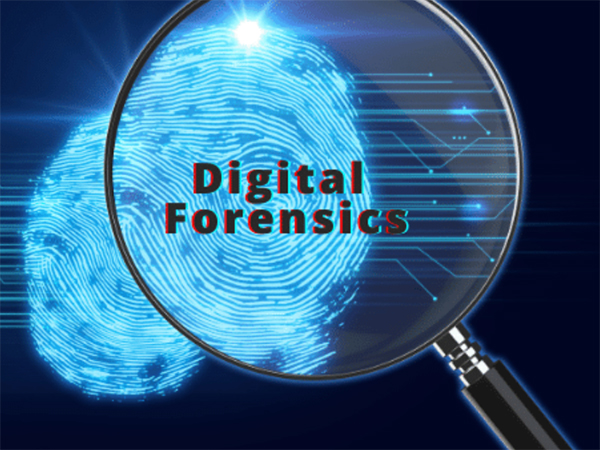Digital Forensics: Unveiling the Truth in Cybersecurity
Digital forensics is a critical branch of forensic science, dedicated to the identification, recovery, investigation, and presentation of digital evidence. As technology shapes every facet of modern life, digital forensics plays an essential role in combating cybercrime, from data breaches and hacking incidents to financial fraud. By analyzing digital data, experts in digital forensics can reconstruct events, trace malicious activities, and provide critical insights that help organizations enhance their security postures.
Computer Forensics
Computer forensics is foundational to digital investigations, focusing on extracting and analyzing evidence from computers and related digital storage devices. Through advanced tools and methodologies, computer forensic specialists can explore system files, directories, and logs, revealing traces of criminal activity. This branch of forensics is essential for examining:
Mobile Forensics
Mobile forensics examines digital evidence stored on mobile devices. With mobile phones often containing extensive personal and work-related information, mobile forensics has become a critical aspect of modern investigations. Mobile forensics involves:
Multimedia Forensics
Multimedia forensics focuses on verifying the authenticity and integrity of digital media, including audio files, images, and videos. This branch uses advanced techniques to identify tampering or alterations in multimedia files. Key components of multimedia forensics include:
Social Link Forensics
Social link forensics examines online interactions across social media platforms to reveal connections and patterns of behavior. In the context of cyber investigations, this branch helps authorities trace communication trails and interactions, making it valuable in cases involving:
Dark Web and Crypto Forensics
Social link forensics examines online interactions across social media platforms to reveal connections and patterns of behavior. In the context of cyber investigations, this branch helps authorities trace communication trails and interactions, making it valuable in cases involving:
Core Components of Digital Forensics
- Identification: The process begins with identifying potential sources of evidence relevant to the case or incident. This phase helps pinpoint devices or data that could provide critical insights during analysis.
- Preservation: Preservation is vital to maintaining the integrity of evidence. It involves securely documenting and protecting the crime or incident scene from tampering, ensuring that digital data remains unaltered.
- Collection: This step includes creating write-protected forensic images to prevent data manipulation, safeguarding the original data, and enabling thorough examination.
- Analysis: Experts conduct an in-depth search to uncover details that relate to the case, employing specialized tools to analyze files, logs, and network data systematically.
- Reporting: The findings are documented in a comprehensive report that presents the evidence in a manner understandable to non-experts, supporting legal, compliance, or remedial actions.
Benefits of Digital Forensics for Cybersecurity
Digital forensics offers invaluable support for organizations aiming to secure their data and infrastructure. Here are some of the primary benefits:
- Enhanced Security Posture: By identifying vulnerabilities and understanding cyber threats, organizations can improve their security frameworks.
- Incident Response: Digital forensics is essential for responding to security incidents, enabling organizations to investigate breaches and mitigate future risks.
- Legal Compliance and Support: Digital forensic evidence can be critical in legal proceedings, helping organizations comply with data privacy regulations and support law enforcement agencies.
- Risk Mitigation: By understanding how breaches occurred, organizations can implement stronger defenses against similar attacks.
Understanding Digital Forensics and Its Importance
Digital forensics involves the systematic examination and analysis of digital evidence found on electronic devices such as computers, mobile phones, and storage media. In the cybersecurity landscape, digital forensics empowers organizations to uncover vulnerabilities, resolve cyber incidents, and safeguard digital assets. In particular, digital forensic investigations offer essential insights, allowing organizations to:
● Identify the scope and impact of cyber incidents
● Strengthen data protection measures
● Aid in legal proceedings
● Maintain compliance with industry standards


Tools and Techniques in Digital Forensics
Digital forensic experts utilize an array of specialized tools to ensure evidence is accurately identified, extracted, and preserved. Common tools and methodologies include:
● Imaging Software: Write-protected imaging software ensures that data is not altered during extraction.
● File Carving Tools: Restore deleted files and fragments of data to gather hidden information.
● Network Forensics Tools: Analyze network activity to track unauthorized access or data transfers.
● Password Recovery Tools: Decrypt files and accounts to retrieve valuable information.
These tools provide a comprehensive approach to gathering and analyzing evidence, supporting digital forensics in delivering accurate results and aiding in legal and cybersecurity measures.
Digital Forensics at Data Patrol
At Data Patrol, we recognize the importance of digital forensics in maintaining robust cybersecurity measures. Our team of experts leverages the latest forensic tools and methodologies to help clients uncover digital evidence, identify vulnerabilities, and establish a secure foundation for their business operations. Whether investigating a breach, recovering critical data, or supporting legal compliance, our digital forensics services ensure that organizations are equipped to navigate the complex cyber landscape confidently.
Data Patrol’s digital forensics services offer:
Prompt Investigation and Analysis: Comprehensive digital investigations to uncover the root cause of cyber incidents.
Real-Time Data Recovery: Restoring deleted or damaged files to gather essential evidence.
Regulatory Compliance: Adhering to industry standards and regulatory requirements.


